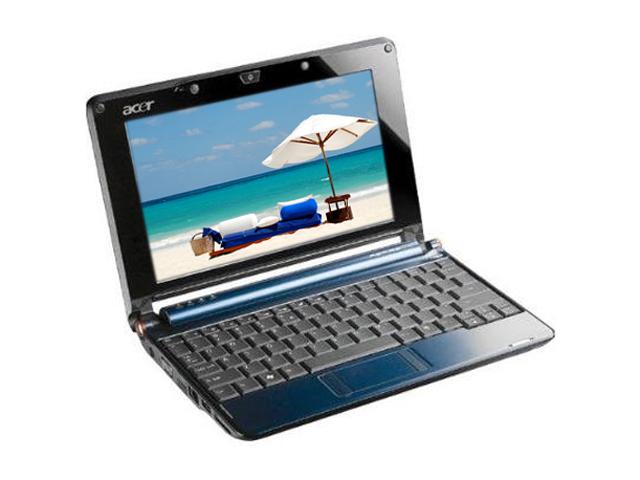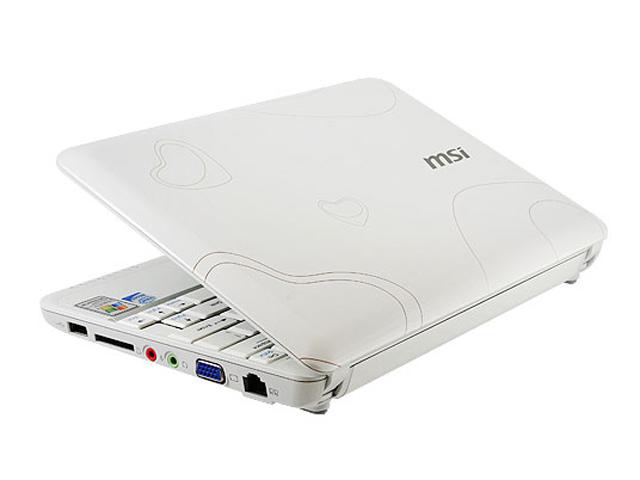Netbooks – Smaller, Lighter, Less Expensive
Notebooks
By Wayne Maruna
As you read this, school
will have been back in session for about a month. Back-to-school means a
restocking of school supplies and perhaps discussion about whether it is time
for sis or junior to have their own PCs, or whether the budget will allow you to
send that college-bound offspring to school with a laptop in the backpack.
The people who build
notebook PCs are making it harder to say no. The lower end of the price
spectrum has nose-dived to where sub-$600 notebooks are not uncommon. In fact,
you can buy a new one for as little as $330 if you’re not wedded to Microsoft
and are willing to live with a smallish screen.
The laptop in my kitchen is
essentially a desktop replacement with a small footprint. I can take it on
trips, but it’s a heavy bugger to tote around thanks to its 15.4” screen. I
almost never run it off its battery pack, so battery life is not important to
me. But to someone who wants to carry their notebook to class or to Dunkin
Donuts after school, weight and battery life are very important, more so than
screen size.
First came luggables, then
came portables, then came notebooks. The newest category is being referred to
as netbooks, highly portable computers with near-normal size keyboards that are
designed to provide internet connectibility, instant messaging, email, and even
webcam support from anywhere an open wireless connection can be found. At the
core of many of these ultra-small notebooks is Intel’s newest processor, called
the Atom. In a space of only 26 square millimeters, Intel has managed to pack
an astounding 47 million transistors. (I’m taking them at their word on this.)
The result is Intel’s smallest and lowest power-consuming processor.
Acer Aspire
One - Linux Lite
Three netbook models are
leading the way in the market. The Acer Aspire One wins the low price trophy at
just $330 by making some significant compromises. First, no Windows. You get Linpus Linux Lite as your operating
system. Other than perhaps having some issues connecting to compatible
peripherals like printers and scanners, one can live happily with a Linux OS as
long as the wireless capability has already been built in, as is the case with
the Aspire One. The diagonal measurement of the screen size is only 8.9”, and
there is no hard drive in the common sense. Instead, one gets an 8 gigabyte
solid state drive (think ‘thumb drive’). That’s actually a workable amount so
long as you have an external USB drive to pass your data and music files to.
Installed memory is 512MB, which is adequate for the Linux system. At a mere
2.2 pounds, you won’t find a more portable device with a ‘real’ keyboard, and
it’s said to boot up in a quick 25 seconds. For an additional $70, you can
trade up to 1GB of RAM, a 120GB hard drive, and Windows XP. Sounds like
money well spent if you ask me.
compromises. First, no Windows. You get Linpus Linux Lite as your operating
system. Other than perhaps having some issues connecting to compatible
peripherals like printers and scanners, one can live happily with a Linux OS as
long as the wireless capability has already been built in, as is the case with
the Aspire One. The diagonal measurement of the screen size is only 8.9”, and
there is no hard drive in the common sense. Instead, one gets an 8 gigabyte
solid state drive (think ‘thumb drive’). That’s actually a workable amount so
long as you have an external USB drive to pass your data and music files to.
Installed memory is 512MB, which is adequate for the Linux system. At a mere
2.2 pounds, you won’t find a more portable device with a ‘real’ keyboard, and
it’s said to boot up in a quick 25 seconds. For an additional $70, you can
trade up to 1GB of RAM, a 120GB hard drive, and Windows XP. Sounds like
money well spent if you ask me.
Catch the Wind

The MSI Wind (Wi-Fi
Network Device) ups the screen size to 10” and adds a traditional
80GB hard drive. Installed memory is 1GB, which is more than enough for the
Windows XP (yes, XP, not Vista) operating system. You get your choice of white,
black, red, or pink case, and if you look around you can find a ‘Love’ version
with hearts and squigglies embossed into the case cover. I suspect this might
be quite popular with some of the fairer gender; for the guys, eh, not so
much.) This is another lightweight at only 2.3 pounds. After rebate, this wee
thing is selling for around $450 as I write this (09/08). MSI stands for
Microstar International, a leading maker of desktop PC motherboards.
Asus Eee PC
with XP
The Asus Eee PC 1000H is
equipped similarly to the MSI Wind; the screen size, hard drive size, installed
memory, and operating system are all the same. The Asus is a tad heavier at 3.2
pounds but reportedly has longer battery life than the MSI Wind. You can
increase the installed memory in the Asus to 2 GB if so desired, though it is
not necessary. Price at the end of Sept. 2008 was around $480. Asus is
well known in the computer community as a manufacturer of high-end desktop PC
motherboards.
All three units above
include wired Ethernet and wireless capability, memory card readers (for camera
cards) and webcams. In the interest of size and weight, all are lacking an
optical drive, so you would definitely needs an external USB DVD burner at a
cost of around $60 in order to load software from disk or play music CDs or
movies.
After my latest trip to a
restaurant, complaining about smaller portions at higher prices, it’s nice to
see something with a downsized price accompanying the smaller size. And the
lighter weight is a trend to which we could all stand to aspire.
 compromises. First, no Windows. You get Linpus Linux Lite as your operating
system. Other than perhaps having some issues connecting to compatible
peripherals like printers and scanners, one can live happily with a Linux OS as
long as the wireless capability has already been built in, as is the case with
the Aspire One. The diagonal measurement of the screen size is only 8.9”, and
there is no hard drive in the common sense. Instead, one gets an 8 gigabyte
solid state drive (think ‘thumb drive’). That’s actually a workable amount so
long as you have an external USB drive to pass your data and music files to.
Installed memory is 512MB, which is adequate for the Linux system. At a mere
2.2 pounds, you won’t find a more portable device with a ‘real’ keyboard, and
it’s said to boot up in a quick 25 seconds. For an additional $70, you can
trade up to 1GB of RAM, a 120GB hard drive, and Windows XP. Sounds like
money well spent if you ask me.
compromises. First, no Windows. You get Linpus Linux Lite as your operating
system. Other than perhaps having some issues connecting to compatible
peripherals like printers and scanners, one can live happily with a Linux OS as
long as the wireless capability has already been built in, as is the case with
the Aspire One. The diagonal measurement of the screen size is only 8.9”, and
there is no hard drive in the common sense. Instead, one gets an 8 gigabyte
solid state drive (think ‘thumb drive’). That’s actually a workable amount so
long as you have an external USB drive to pass your data and music files to.
Installed memory is 512MB, which is adequate for the Linux system. At a mere
2.2 pounds, you won’t find a more portable device with a ‘real’ keyboard, and
it’s said to boot up in a quick 25 seconds. For an additional $70, you can
trade up to 1GB of RAM, a 120GB hard drive, and Windows XP. Sounds like
money well spent if you ask me.